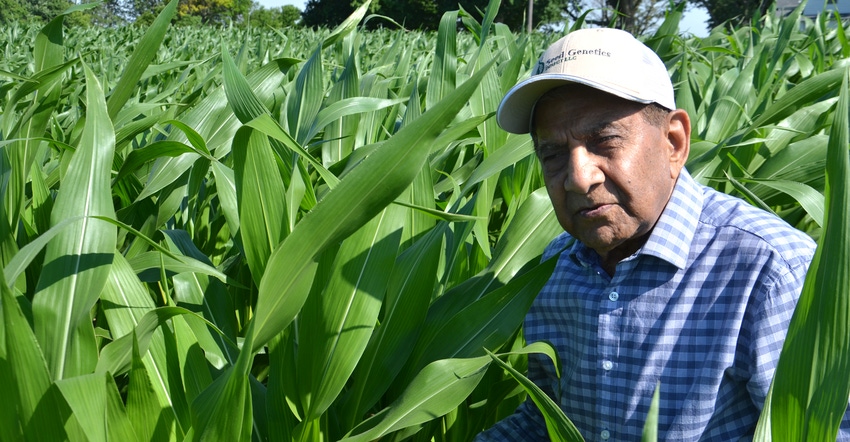
Once corn is up and growing, it’s time to walk fields and study the hand you’ve been dealt. “I can’t wait to get into the field and see what’s happening,” Dave Nanda says. He is director of genetics for Seed Genetics Direct. The company sponsors Corn Watch ’22.
This year’s Corn Watch field in central Indiana was planted May 11. Over 95% of the expected stand based on seeding rate emerged within seven days of planting, and within 24 hours after the first plant emerged.
Related: Corn Watch field jumps off to fast start
“That’s an amazing feat, and it shows what can happen when you have the right combination of moisture, temperature and overall growing conditions,” Nanda says. “It’s a real plus when corn gets off to such a quick start.”
Your job once the crop is up and growing is to walk fields as often as you can, scouting for anything unusual and out of the ordinary. Put on some comfortable shoes and head to the field.
Early-season scouting
Here are some things you might encounter during the first third of the growing season:
Purple corn. This is a common occurrence in most years, but it’s not usually a cause for alarm, Nanda says. “You are more likely to see it very early if conditions are cool and wet,” he says. “It may be a real phosphorus deficiency, but caused by conditions, not a true lack of phosphorus in the soil. If that’s the case, it will disappear once warm weather returns. Also, some hybrids tend to show some purpling when plants are small.”
Striping. Refer to a resource such as the Purdue University Corn & Soybean Field Guide to determine what might cause striping. Often, it’s a sign of a nutrient deficiency. In 2021, sulfiur deficiency showed up in many fields, especially early in the season. In some cases, it persisted.
The best way to diagnose if you’re seeing a sulfur deficiency is to pull leaves for a tissue sample, Nanda says. If some plants show striping and others do not, pull leaves from both types of plants and submit a sample of each for a tissue test.

Emergence issues. Not all corn emerged as quickly or as evenly as the Corn Watch field. If your field wasn’t as lucky and the stand isn’t picket-fence perfect, dig where there are missing plants.
“We find that about 80% of the time, the seed was planted but didn’t emerge,” Nanda says. “Either it didn’t germinate, or it leafed out underground, perhaps because of unfavorable weather conditions and/or surface crusting.
“Plus, remember that germination is less than 100%. If it’s 95%, that means you should expect at least one missing space in 1/1,000 acre — or 17 feet, 5 inches of row in 30-inch rows — simply because the seed didn’t germinate.”
About the Author(s)
You May Also Like




